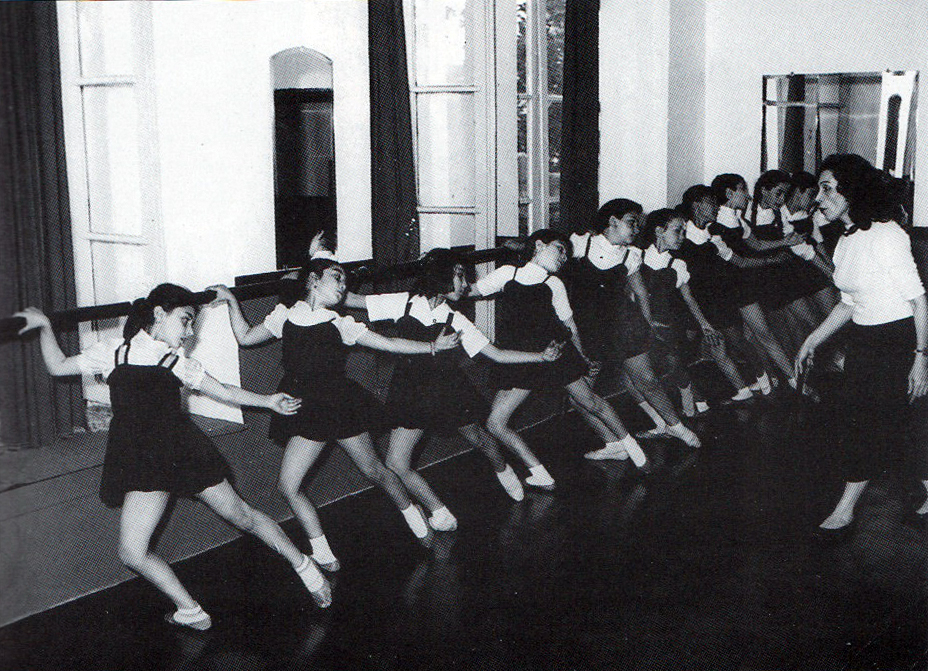There is no position on earth more powerful than that of the ballet teacher. Young children vulnerably stripped down to skin-tight uniforms stand before a mirror, their bunheads held high, as the ballet teacher tells them whether or not they should be happy with what they see. The ballet teacher is an authoritarian, a mentor, and an idol for young dancers; a role that can only be filled by a strong, empathic person with the capacity to resist the temptation of exploiting their power. In my 13 years of ballet classes, I have had dance teachers who wielded this power with grace, who I dedicate my work ethic and creativity to. But we need to talk about the other kind.
There is a story of a girl who overindulged, puked up her lunch, and then went to ballet class minutes later to hear from her teacher that her posture has never looked so good, and that she should keep up whatever she’s been doing. There was the time two ten-year-old girls were used as examples to demonstrate a good dance body versus a bad dance body to the class. These are just two of the many instances in my life where ballet teachers made it all too clear that your body is the most important thing about you. This needs to be changed.
When the dance studio is made toxic by an ignorant teacher, a lasting resentment between a student and their body is born
Unthoughtful dance teachers are capable of permanently affecting the psyche of children, when body shaming and cruelty are espoused under the guise of a technique correction. Instructors who are not cautious of their capacity to hurt a child can cause serious damage to a dancer’s sense of self worth. I hated my round stomach at only eight years old after continuously being told to suck it in, and ten years later I continue to wear long pants weeks into summer to resist showing my “bulky quads”. Although dance is a thrilling, athletic artform that has the potential to give a child an incredible sense of freedom and control, when the dance studio is made toxic by an ignorant teacher, a lasting resentment between a student and their body is born.
Ballet teaching methods are essentially a free-for-all, extending beyond berating comments to the realm of physical contact, and this is accepted due to the abnormality and incomparability of the artform.
Teachers are trained to correct the technique of their students using physical contact, which is effective considering the corporeal nature of dance. This power, however, is often abused. A teacher might rotate a foot or soften a hand, but are just as likely to grab an upper thigh or pinch a rear end as well. Though void of sexual intentions, these situations made me incredibly uncomfortable during my dancing years, but in a room full of 20 peers I was not about to make a fuss. Ballet, after all, is a strict, traditional discipline, and not accepting a correction is unheard of, even shameful. A dancer is praised for smiling through the pain, so shying away from something that causes displeasure is a sign of weakness. It should be the teacher’s job to ask a student if they agree to a physical correction and to create an environment where one would be comfortable saying “no”. Sadly, a dance class where either of these requirements are met is hard to find. Although the intentions are never sexual and always for the benefit of the dancer’s technique, I do not see why this lack of active consent is acceptable, especially given the student-teacher power dynamic at play.
Ballet, after all, is a strict, traditional discipline, and not accepting a correction is unheard of, even shameful. A dancer is praised for smiling through the pain, so shying away from something that causes displeasure is a sign of weakness.
As the world speaks up about the importance of consent, the ballet world remains an untouched territory, and its bizarre conception of the body as a tool to be critiqued and not a sensitive, feeling aspect of a person is left uncontradicted. For the sake of dance, the artform I love, ballet class needs to reach society’s standards of moral behaviour. Ballet’s many traditions can still be maintained if we dust off the old art after six centuries of stillness to re-examine it with a modern lens. With a good look, we would find many outdated customs in the dance studio that — when applied to any other aspect of life— would be deemed immoral. The key to this revolution, to the birth of a new, thoughtful form of ballet training, is through teachers who are coaching young dancers to hate their bodies and never voice their concerns.
Ballet teachers need to be more careful with what they say and do — they are dressed for comfort, sitting in a chair, and spewing critiques, while their students are wearing close to nothing, forbidden from talking, and trying desperately to impress. Even though teachers have the power (and rightly so), they need to respect it instead of flinging it around blindly, unaware of the wounds they might inflict.




